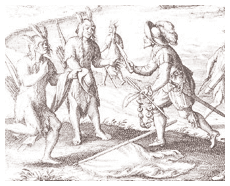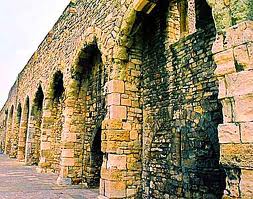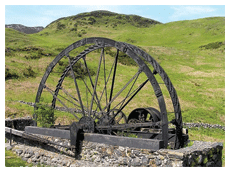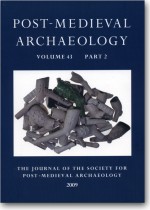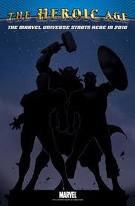- Latest Archaeology Updates
- Importance and applicability
- Famous Archaeologists
- Museums Collections
- Site Map
- World Heritage Sites
- World History Monuments
- Archaeological Organizations
- World Atlas of Archaeology
- Forensic Investigation and Geophysics
- Contact Us
- Movies based on Archaeology
- Frequently Asked Questions
- Archaeological discoveries
- Tell a Friend
- Archaeological Abbreviations
- Gallery Collections
- Famous-Museums site map
- Famous-archaeologists site map
- Archaeological Monuments site map
Post-medieval archaeology is a term used in Europe to describe the study of the material past over the last 500 years. Increasingly the field is referred to as Historical archaeology, a term in international usage. It is closely related to Industrial archaeology, although Post-medieval archaeology conventionally has not extended its studies past the mid 18th century. Such a 'cut-off' date is increasingly critiqued by work within Historical archaeology and contemporary archaeology.
The traditional date for the beginning of the post-medieval period in Britain has been 1485 when, following the Battle of Bosworth the Tudor dynasty took the throne. In practice, the medieval period is now often extended into the reign of the Tudor monarchs and the boundary between the two eras is not precise. As with all attempts to divide the archaeological record into neat chunks, efforts to impose an exact date on the transition are doomed to be questioned by current and new findings.
Given the relatively strong historical record running alongside the archaeological one, post-medieval archaeology is often better positioned to study the effects of known social and political change. The immediacy of the period means that it appeals in fields such as genealogy as well as to students of social history.
The Post-Medieval Archaeology is considered as a bi-annual journal study of the material evidence of European society. This period saw the conversion of medieval to industrial society. In the modern European world the collectiveness of individual mentalities changed by improving the social segregation, family, gender.
Post-Medieval-Archaeology desires to promote a multidisciplinary approach to the past, exploiting objects, iconographic and technical facts, and to engage in the academic debates.
Post-Medieval Archaeology is a global magazine, covering subjects, illustrating the broad scope of post-medieval archaeology including pottery, glass, metalwork, and Industrial Archaeology.
In archaeological collections, the Post Medieval period of Southampton is not Very well considered, though the Post Medieval artifacts of the City has been contained in the collections of Southampton Local History.
Though trade declined in Southampton it continued to be a port in the prosperous years of the 15th century, and in the town large houses like Tudor were occupied by wealthy merchants who continued to live their House.
In the period of late 17th and 18th centuries, Southampton enjoyed pithy popularity. In Southampton, spa resort is occupied by the upper classes, and visitors like George III, the Duchess of Devonshire and Jane Austen is also included. In the Local History collections, spa fountain is one of the Part. Manufacturing activity continued in the city. In 1838 Southampton became a modern port giving rise to the improvement of transportation and manufacturing. During the beginning of the 20th century and at the end of 19th century, Southampton became a home town and it was called as "gateway to the empire" and it is the busiest port.
Industrial archaeology concerns itself with the physical remains of the Industrial Revolution. It is born out of the need to record and preserve the remains of industrialisation before they disappear. It is a part of landscape study and includes cultural aspects also. The term may have been coined in the 1950s in Manchester.
Post-Medieval Archaeology is a bi-annual journal devoted to the study of the material evidence of European society wherever it is found in the world.
The Heroic Age
The Heroic Age focuses on Northwestern Europe during the early medieval period (from the early 4th through 13th centuries). We seek to foster dialogue between all scholars of this period across ethnic and disciplinary boundaries, includingbut not limited tohistory, archaeology, and literature pertaining to the period..
-
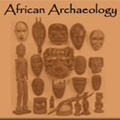 African Archaeology Africa has the longest record of human activity of any part of the world and along with its geographical extent; it contains an enormous archaeological resource. Scholars have studied Egyptology for centuries but archaeologists have only paid serious attention to the rest of the continent in more recent times.
African Archaeology Africa has the longest record of human activity of any part of the world and along with its geographical extent; it contains an enormous archaeological resource. Scholars have studied Egyptology for centuries but archaeologists have only paid serious attention to the rest of the continent in more recent times. -
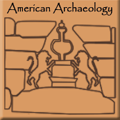 American Archaeology Archaeology of the Americas is the learning of the archaeology of North America, Central America (or Mesoamerica), South America and the Caribbean, which is to say, the pre-history and Pre-Columbian history of Native American peoples.
American Archaeology Archaeology of the Americas is the learning of the archaeology of North America, Central America (or Mesoamerica), South America and the Caribbean, which is to say, the pre-history and Pre-Columbian history of Native American peoples. -
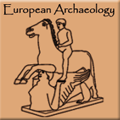 European Archaeology In terms of area, Europe is the world's second smallest continent, with an area of 10,400,000 kmē (4,000,000 square miles), making it slightly larger than Australia.
European Archaeology In terms of area, Europe is the world's second smallest continent, with an area of 10,400,000 kmē (4,000,000 square miles), making it slightly larger than Australia. -
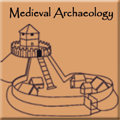 Medival archaeology The period covers the commotion caused by the fall of the Medival archaeology Roman Empire and cultures such as the Vikings, Saxons and Franks.
Medival archaeology The period covers the commotion caused by the fall of the Medival archaeology Roman Empire and cultures such as the Vikings, Saxons and Franks. -
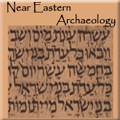 Near Eastern Archaeology Near Eastern Archaeology is a wide generalised application, and is divided into further regional sub-branches, the archaeology of modern states in the region or along broad thematic lines.
Near Eastern Archaeology Near Eastern Archaeology is a wide generalised application, and is divided into further regional sub-branches, the archaeology of modern states in the region or along broad thematic lines. -
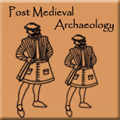 Post Medieval Archaeology The Post Medieval Archaeology is considered as a bi-annual journal study of the material evidence of European society. This period saw the conversion of medieval to industrial society.
Post Medieval Archaeology The Post Medieval Archaeology is considered as a bi-annual journal study of the material evidence of European society. This period saw the conversion of medieval to industrial society. -
 Modern Archaeology In contrast to the antiquarianism of classical archaeology, anthropological archaeology today is concerned with culture history (i.e., the chronology of events and cultural traditions) and the explanation of cultural processes.
Modern Archaeology In contrast to the antiquarianism of classical archaeology, anthropological archaeology today is concerned with culture history (i.e., the chronology of events and cultural traditions) and the explanation of cultural processes.

